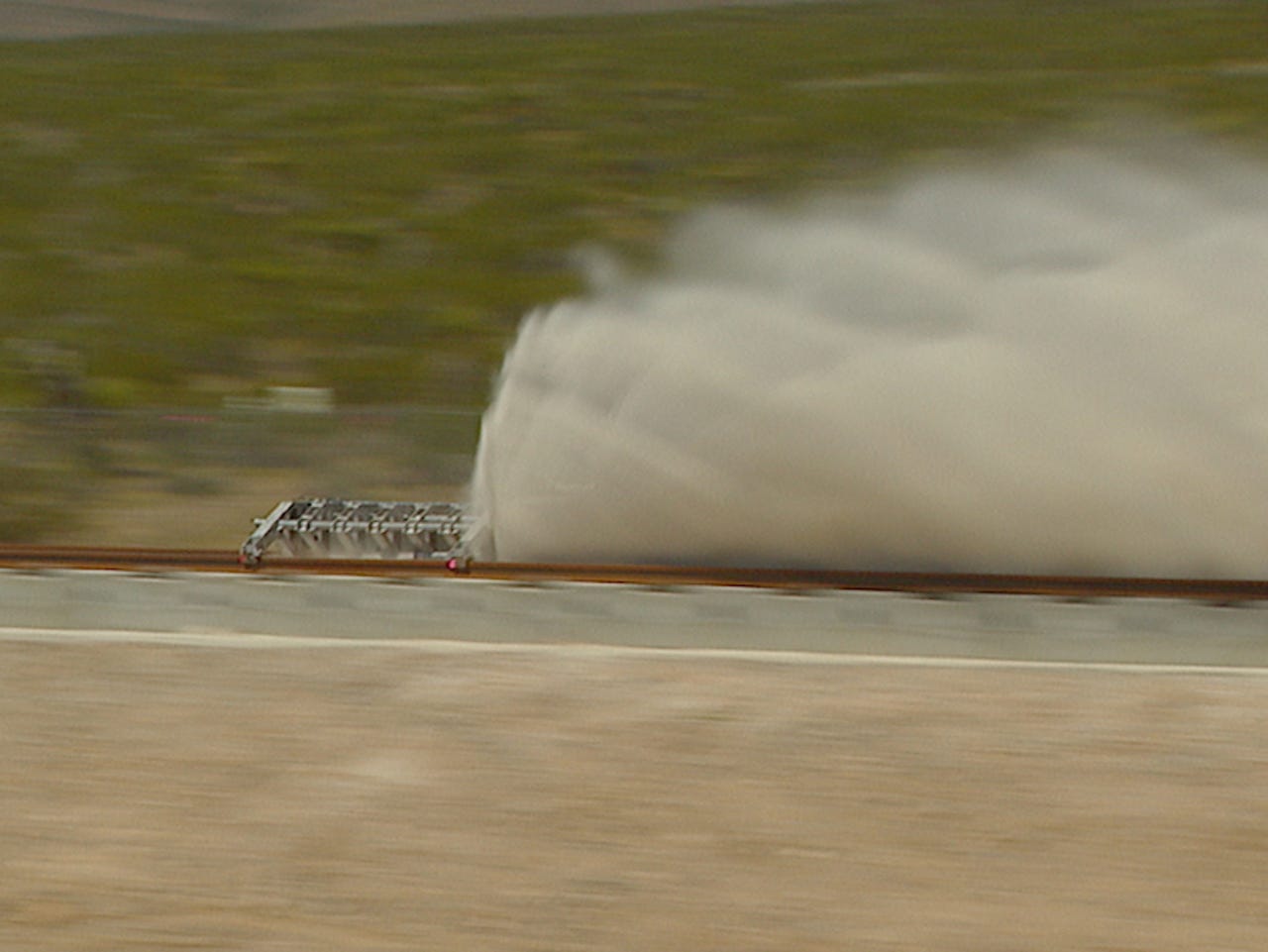Watch Hyperloop One's first propulsion test sled hit 100mph in Nevada desert


The propulsion system may eventually power much larger pods fired through a vacuum-sealed tunnel at speeds of up to 750mph.
Hyperloop One has completed its first successful public test of what could be the foundation of tomorrow's transit system.
The company's first open-air test in the Nevada desert on Wednesday showcased an electromagnetic-powered sled accelerating to over 100mph in a short track.
The test demonstrated the proposed propulsion system that may eventually power much larger pods fired through a vacuum-sealed steel tunnel at speeds of up to 750mph.
Hyperloop One, which landed $80m in funding this week, is one of the firms attempting to realise a proposal by SpaceX and Tesla boss Elon Musk, to transport passengers and cargo between Los Angeles and San Francisco in around 30 minutes. Musk estimated it would cost $6bn to build the technology and the link between the two cities.
The Nevada open-air test is a precursor to a planned full-scale experiment scheduled for later this year, where a larger sled will carry passenger capsules through the vacuum-sealed metal tubes. The design of the system is meant to cut out the friction of conventional rail transport and minimize air resistance to conserve power and achieve high speeds.
Reuters quotes Brogan BamBrogan, a former SpaceX engineer who co-founded Hyperloop One, as saying the test was a major milestone.
"Technology development testing can be a tricky beast," he said to a crowd of 300 people witnessing the test. "You never know on a given day if things are going to work exactly like you want."
Hyperloop One CEO Rob Lloyd said he expected Hyperloop to transport cargo by 2019 and passengers by 2021.
While there are still many questions over whether the Hyperloop can be realized at a feasible cost, Hyperloop One has now developed a partnership network that will assist answering those questions. The network includes firms in traditional engineering, architecture, infrastructure strategy, financing, construction, and operations.
These partners include AECOM, AMBERG Group, Arcturan Sustainable Cargo, ARUP, Bjarke Ingels Group, Cargo Sous Terrain, Deutsche Bahn Engineering & Consulting, FS LINKS, GRID, KPMG, and SYSTRA.
AECOM and Hyperloop One will conduct a feasibility study with Arcturan Sustainable Cargo to assess whether it can boost productivity at the Ports of Long Beach and Los Angeles.
Hyperloop One is also working with Arup, which helped build London's Crossrail's underground tunnels.
"Hyperloop has the potential to solve many of today's most complex long-distance transport issues," Arup group chairman Gregory Hodkinson said.
"If railways helped enable the first industrial revolution, Hyperloop has the potential to do the same for the information economy, overcoming distances and creating connections between people, places, ideas and opportunities."